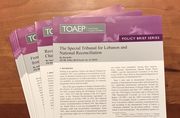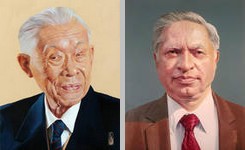Table of contents:
5. The perpetrator killed one or more persons.
5.1.1. Killing by directs methods.
P.1. Evidence of killing by particular methods.
P.1.1. Evidence of shooting to death.
P.1.2. Evidence of killing with machetes.
P.1.3. Evidence of killing by grenade.
P.1.4. Evidence of shelling causing death.
P.1.5. Evidence of arson causing death.
P.1.6. Evidence of beatings causing death.
P.3. Evidence indicating that killing was occurring.
P.3.1. Evidence of people looting.
P.3.2. Evidence of people fleeing.
5.1.2. Killing by indirect methods.
P.4. Evidence of death caused by conditions of life in detention centres.
P.5. Evidence of death caused by conditions of life in ghettos.
P.6. Evidence of death caused by deportations.
P.7. Evidence of death caused by deprivation of medical services.
P.8. Evidence of death caused by destruction of villages and crops.
5.1.3. Evidence that killings or attacks occurred
P.10.1. Evidence of dead bodies seen soon after killings by eyewitnesses
P.10.2. Evidence of exhumed bodies identified by eyewitnesses
P.10.3. Evidence of exhumed bodies examined by forensic experts.
P.11. Evidence of specific people whom were never seen again.
Element:
5. The perpetrator killed one or more persons.
According to the Akayesu Trial Chamber Judgment:
"In concrete terms, for any of the acts charged under Article 2 (2) of the Statute to be a constitutive element of genocide, the act must have been committed against one or several individuals, because such individual or individuals were members of a specific group, and specifically because they belonged to this group. Thus, the victim is chosen not because of his individual identity, but rather on account of his membership of a national, ethnical, racial or religious group. The victim of the act is therefore a member of a group, chosen as such, which, hence, means that the victim of the crime of genocide is the group itself and not only the individual."[1]
"542. The requirements for “killing” referred to under Article 4(2)(a) are equivalent to those for murder under Article 5. Murder as an act of genocide requires proof of a result. The elements of murder have already been detailed in the sections on murder as a crime against humanity and as a violation of the laws or customs of war. A numeric assessment of the number of people killed is not required for the actus reus of genocide to be established."
5.1.1. Killing by directs methods.
P.1. Evidence of killing by particular methods.
P.1.1. Evidence of shooting to death.
P.1.2. Evidence of killing with machetes.
P.1.3. Evidence of killing by grenade.
P.1.4. Evidence of shelling causing death.
P.1.5. Evidence of arson causing death.
P.1.6. Evidence of beatings causing death.
P.3. Evidence indicating that killing was occurring.
P.3.1. Evidence of people looting.
P.3.2. Evidence of people fleeing.
5.1.2. Killing by indirect methods.
P.4. Evidence of death caused by conditions of life in detention centres.
P.5. Evidence of death caused by conditions of life in ghettos.
P.6. Evidence of death caused by deportations.
P.7. Evidence of death caused by deprivation of medical services.
P.8. Evidence of death caused by destruction of villages and crops.
5.1.3. Evidence that killings or attacks occurred
P.10.1. Evidence of dead bodies seen soon after killings by eyewitnesses
P.10.2. Evidence of exhumed bodies identified by eyewitnesses
P.10.3. Evidence of exhumed bodies examined by forensic experts.
P.11. Evidence of specific people whom were never seen again.
Footnotes:
[1] ICTR, Prosecutor v. Akayesu, "Judgement", ICTR-96-4-T, 2 September 1998, para. 521. See also ICTR, Prosecutor v. Gatete,"Judgement", ICTR-2000-61-T, 31 March 2011, para. 584.







